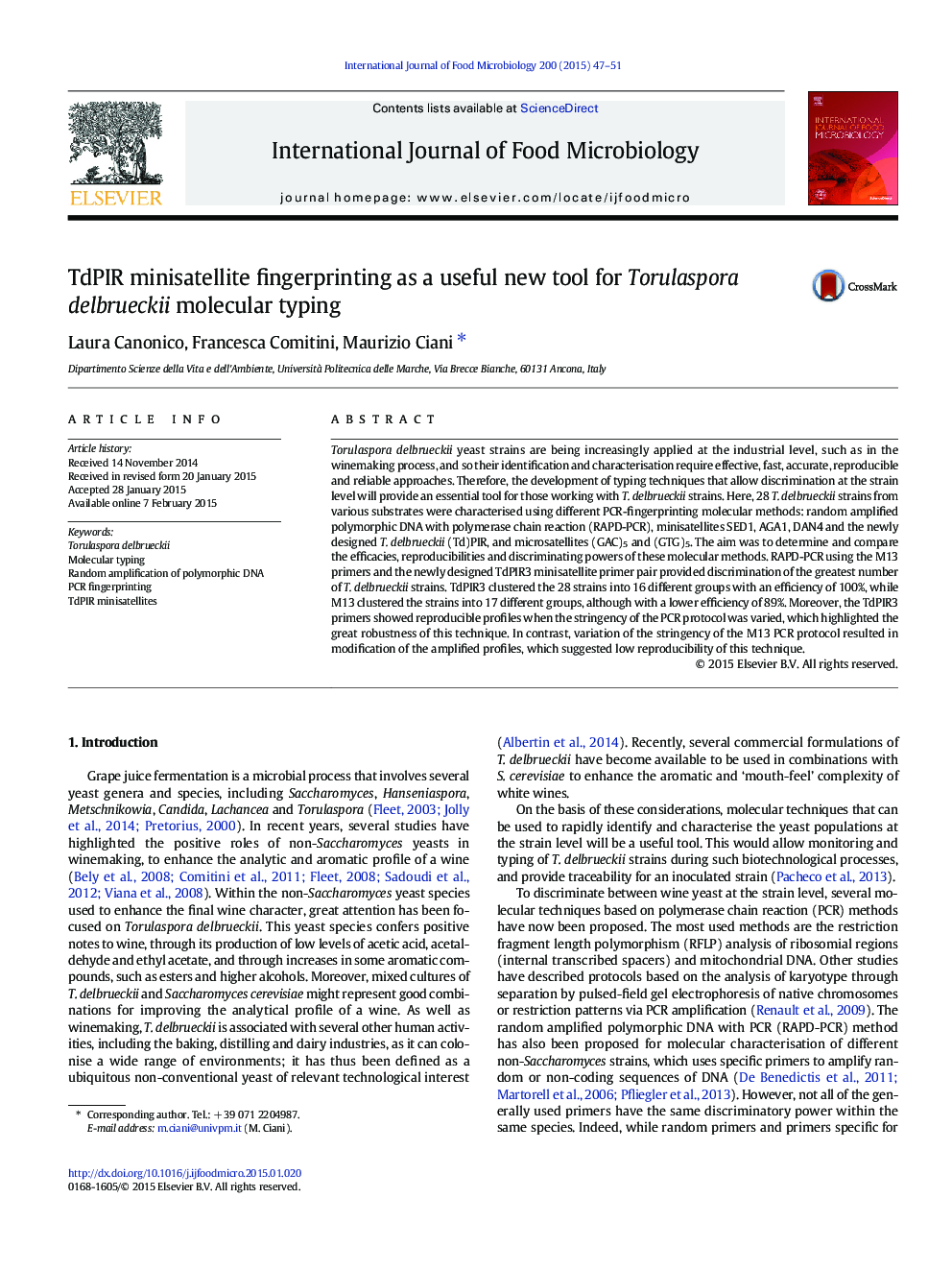| Article ID | Journal | Published Year | Pages | File Type |
|---|---|---|---|---|
| 4366636 | International Journal of Food Microbiology | 2015 | 5 Pages |
•Torulaspora delbrueckii population was characterised.•A newly designed PCR-fingerprinting method based on TdPIR minisatellites was compared with other typing techniques.•PCR-fingerprinting based on TdPIR primer pairs showed high amplification efficiency and discrimination power.•T. delbrueckii PCR-fingerprinting based on TdPIR minisatellites is a simple and reproducible typing technique.
Torulaspora delbrueckii yeast strains are being increasingly applied at the industrial level, such as in the winemaking process, and so their identification and characterisation require effective, fast, accurate, reproducible and reliable approaches. Therefore, the development of typing techniques that allow discrimination at the strain level will provide an essential tool for those working with T. delbrueckii strains. Here, 28 T. delbrueckii strains from various substrates were characterised using different PCR-fingerprinting molecular methods: random amplified polymorphic DNA with polymerase chain reaction (RAPD-PCR), minisatellites SED1, AGA1, DAN4 and the newly designed T. delbrueckii (Td)PIR, and microsatellites (GAC)5 and (GTG)5. The aim was to determine and compare the efficacies, reproducibilities and discriminating powers of these molecular methods. RAPD-PCR using the M13 primers and the newly designed TdPIR3 minisatellite primer pair provided discrimination of the greatest number of T. delbrueckii strains. TdPIR3 clustered the 28 strains into 16 different groups with an efficiency of 100%, while M13 clustered the strains into 17 different groups, although with a lower efficiency of 89%. Moreover, the TdPIR3 primers showed reproducible profiles when the stringency of the PCR protocol was varied, which highlighted the great robustness of this technique. In contrast, variation of the stringency of the M13 PCR protocol resulted in modification of the amplified profiles, which suggested low reproducibility of this technique.
